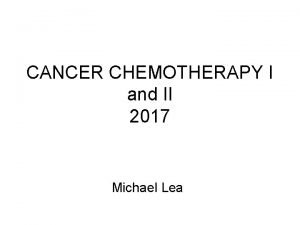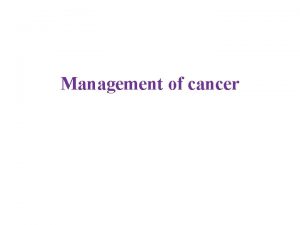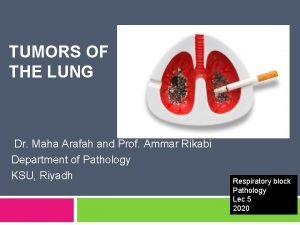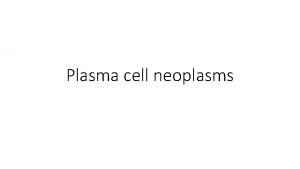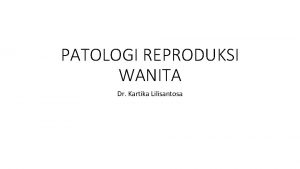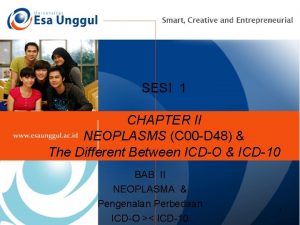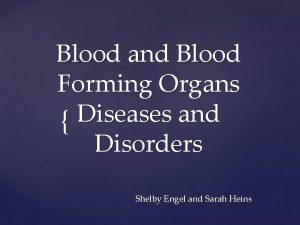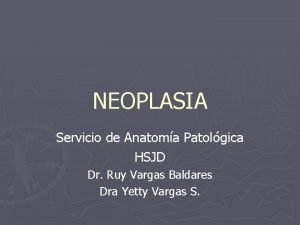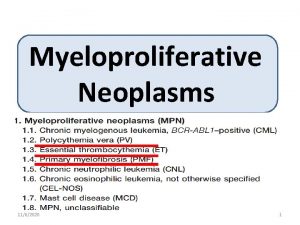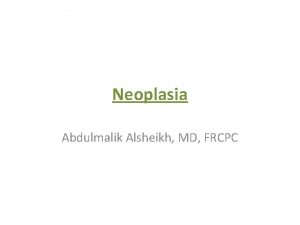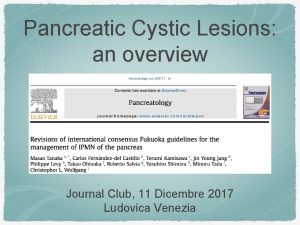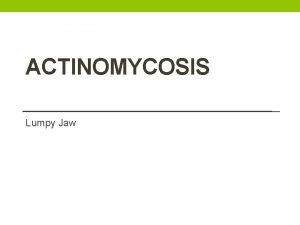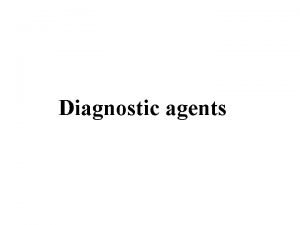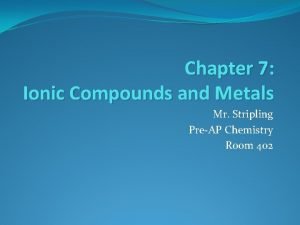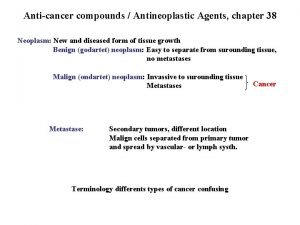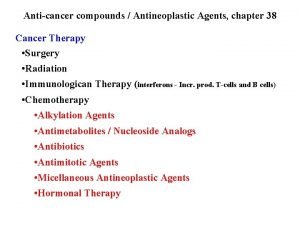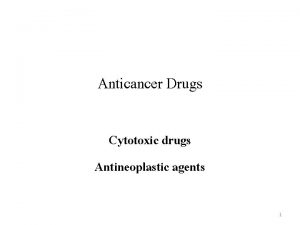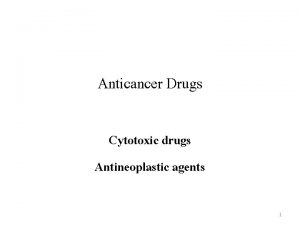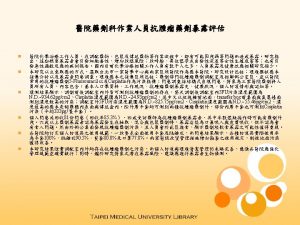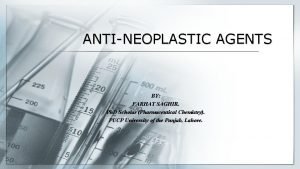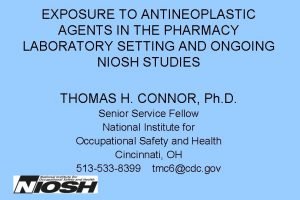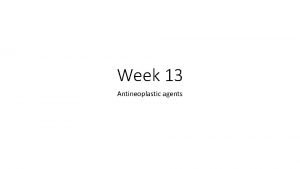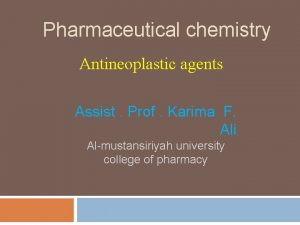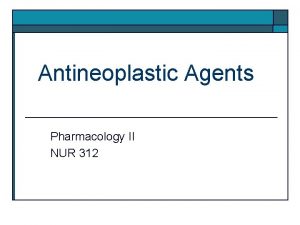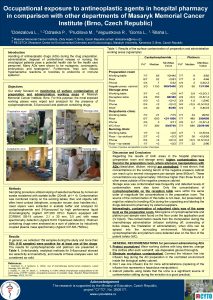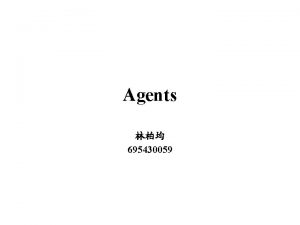Anticancer compounds Antineoplastic Agents chapter 38 Neoplasm New




















- Slides: 20

Anti-cancer compounds / Antineoplastic Agents, chapter 38 Neoplasm: New and diseased form of tissue growth Benign (godartet) neoplasm: Easy to separate from surounding tissue, no metastases Malign (ondartet) neoplasm: Invassive to surounding tissue Metastases Metastase: Secondary tumors, different location Malign cells separated from primary tumor and spread by vascular- or lymph systh. Terminology differents types of cancer confusing Cancer

Cell cycle: Proliferating cells G 1: Newly born cell Short period proliferating cells S: Replication of DNA G 2: Cell death M: Mitosis (antimitotic agents, bind. to microtubuli) G 0: Non-proliferating cell Quiesence

Prophase Anaphase Metaphase Telophase

Control by growth factors Most drugs act on cells in mitosis Control by growth factors

DNA and DNA replication DNA bases Base pairs Double a-helix

DNA helicases: Unwinding DNA binding proteins: Prevents winding back DNA primase: formation of DNA/RNA primer (from free nucleosides in cell) DNA polymerase: Catalyse elongation of new strand (5’ - 3’) Lagging strand: DNA ligase: Connects Okasaki fragments

Biochemical Basis of Cancer • Mutation • Chemicals • Oncogenic Viruses • Altered Gene Expression Mutation 1. 2. Mutation(s) = initiation (not cancer alone) Promotion; proliferation of mutated cells, exposure to chemical (not carciogenic alone, ex estrogen) Chemicals Compounds (or metabolites) that reacts with DNA (alkylation agents) or initiate free radical processes that eventually damage DNA (Ex ionizing radiation)

Biochemical Basis of Cancer • Mutation • Chemicals • Oncogenic Viruses • Altered Gene Expression Oncogenic Viruses Viral DNA (or proviral RNA from RNA viruses) inserted in host DNA. . Mutation Altered Gene Expression Incorrect expression of proto-oncogene Increased express. oncogene - Increased prod. of growth factors Decreased expression of tumor-supressor genes (anti-oncogenes)

Cancer Therapy • Surgery • Radiation • Immunologican Therapy (interferons - Incr. prod. T-cells and B cells) • Chemotherapy • Alkylation Agents • Antimetabolites / Nucleoside Analogs • Antibiotics • Antimitotic Agents • Micellaneous Antineoplastic Agents • Hormonal Therapy

Alkylating Agents DNA Bases - Nucleophilic Centra Also O in phosphate may be alkylated

Alkylating Agents 1) Nitrogen mustards 2) Other alkylation agents 3) Pt-complexes Metabolism of alkyl halides Phase II conjug. glutathion Rel. selective tox. to lymphoid tissue (Hodkins disease, Lymphomas) More water sol. Tox. to rapid proliferating cells (short time for DNA repair)


Chlorambucil Leukeran®, Aryl decrease reactivity Melfalan Alkeran®, L-isomer Active transport mech (L-AA) Cyclophosphamide Sendoxan® Ifosfamide Holoxan® Pro-drug

MESNA Co-admin. Activation by CYP 450 (CYP 3 A 4); enzym indusing drugs may increase activity CYP 3 A 4 inhibitors Decrease activation of cyclophosfamide

Estramustine phosphate Estracyt® Pro-drug

Alkylating Agents 1) Nitrogen mustards 2) Other alkylation agents 3) Pt-complexes Busulfan Thiotepa Not reg. N Mono or dialkylation Better leav. gr, not 3 -embered ring intermed cf dimethyl sulfate Not reg. N

Temozolomide Temodal® Lomustine medac® Nitrosoureas

Alkylating Agents 1) Nitrogen mustards 2) Other alkylation agents 3) Pt-complexes


Certain proteins binds to bent DNA, and prevents normal repair Pt replace Zn in necessary transcription factors DNA polymerase “collides” with Pt, DNA strain breaks mechanically Cisplatin Platinol® Platistin® Carboplatin® Carbosin® Paraplatin® More stabile comp. (reacts less readily with water)
 Anticancer drugs classification
Anticancer drugs classification Allaloids
Allaloids Anticancer drugs classification
Anticancer drugs classification Bronchogenic neoplasm
Bronchogenic neoplasm Plasma cell neoplasm
Plasma cell neoplasm Icd 10 dismenore
Icd 10 dismenore Kode icd 10 tumor leher
Kode icd 10 tumor leher Malignant neoplasm of the blood-forming organs
Malignant neoplasm of the blood-forming organs Malignant neoplasm of liver
Malignant neoplasm of liver Classification of polycythemia
Classification of polycythemia Md frcpc definition
Md frcpc definition Ipmn
Ipmn Lumpy jaw meaning
Lumpy jaw meaning Diagnostic agents are the compounds used to
Diagnostic agents are the compounds used to Venn diagram of ionic covalent and metallic bonds
Venn diagram of ionic covalent and metallic bonds Ionic compounds properties
Ionic compounds properties 7 ionic and metallic bonding practice problems
7 ionic and metallic bonding practice problems Chapter 16 toward a new heaven and a new earth
Chapter 16 toward a new heaven and a new earth Chapter 7 chemical formulas and chemical compounds test
Chapter 7 chemical formulas and chemical compounds test Modern chemistry chapter 7
Modern chemistry chapter 7 Chapter 7 ionic compounds and metals
Chapter 7 ionic compounds and metals
